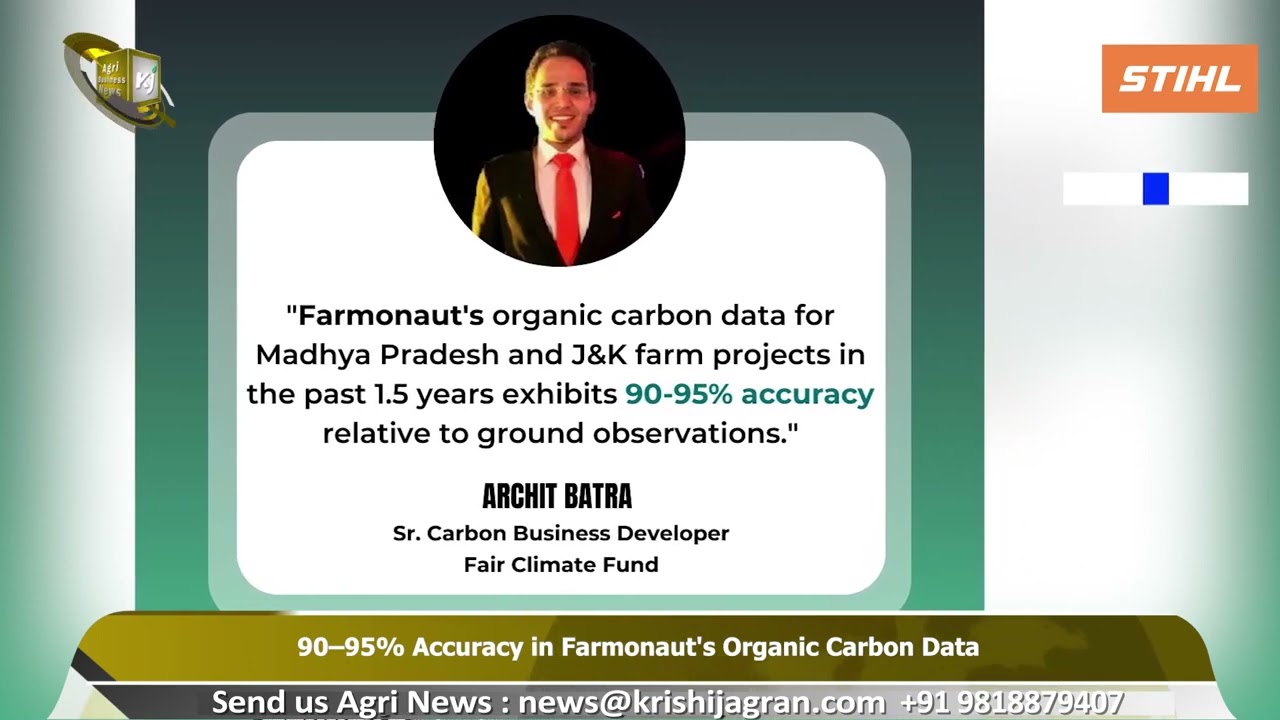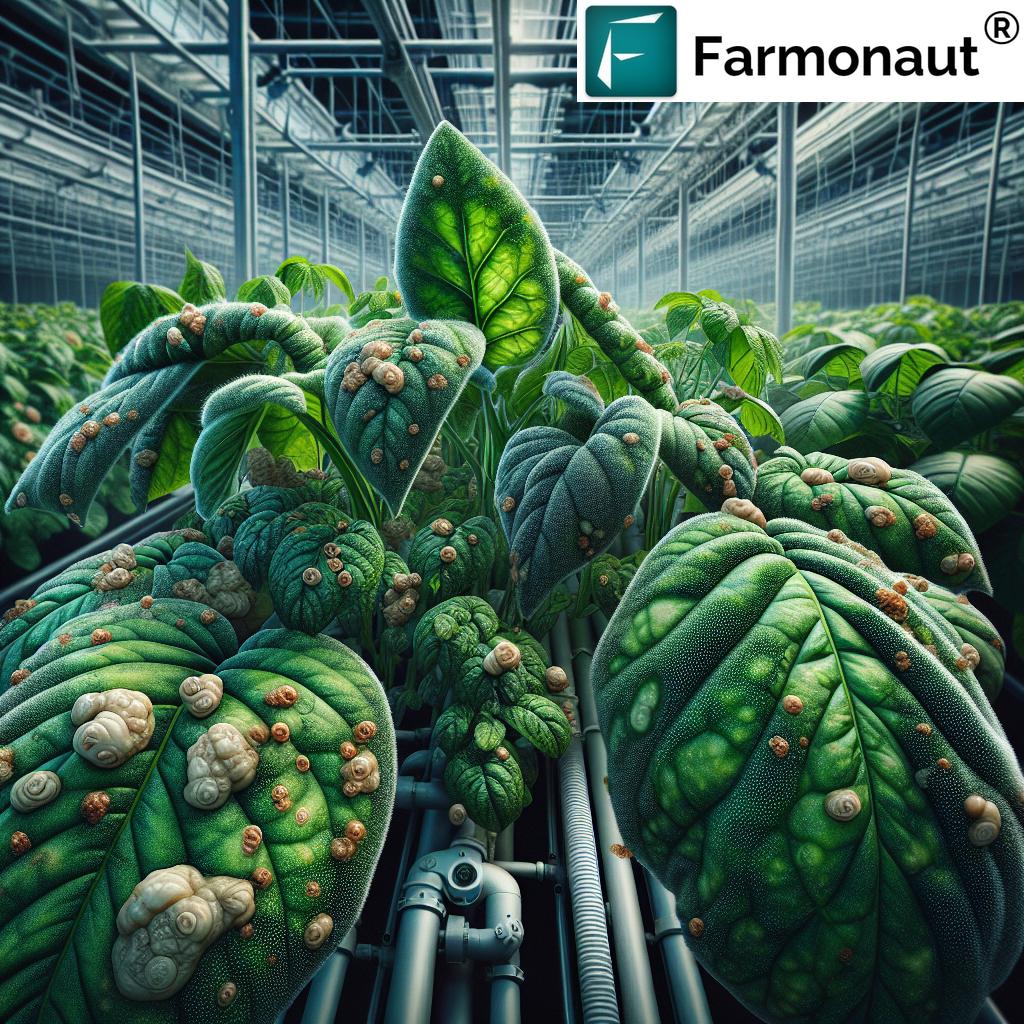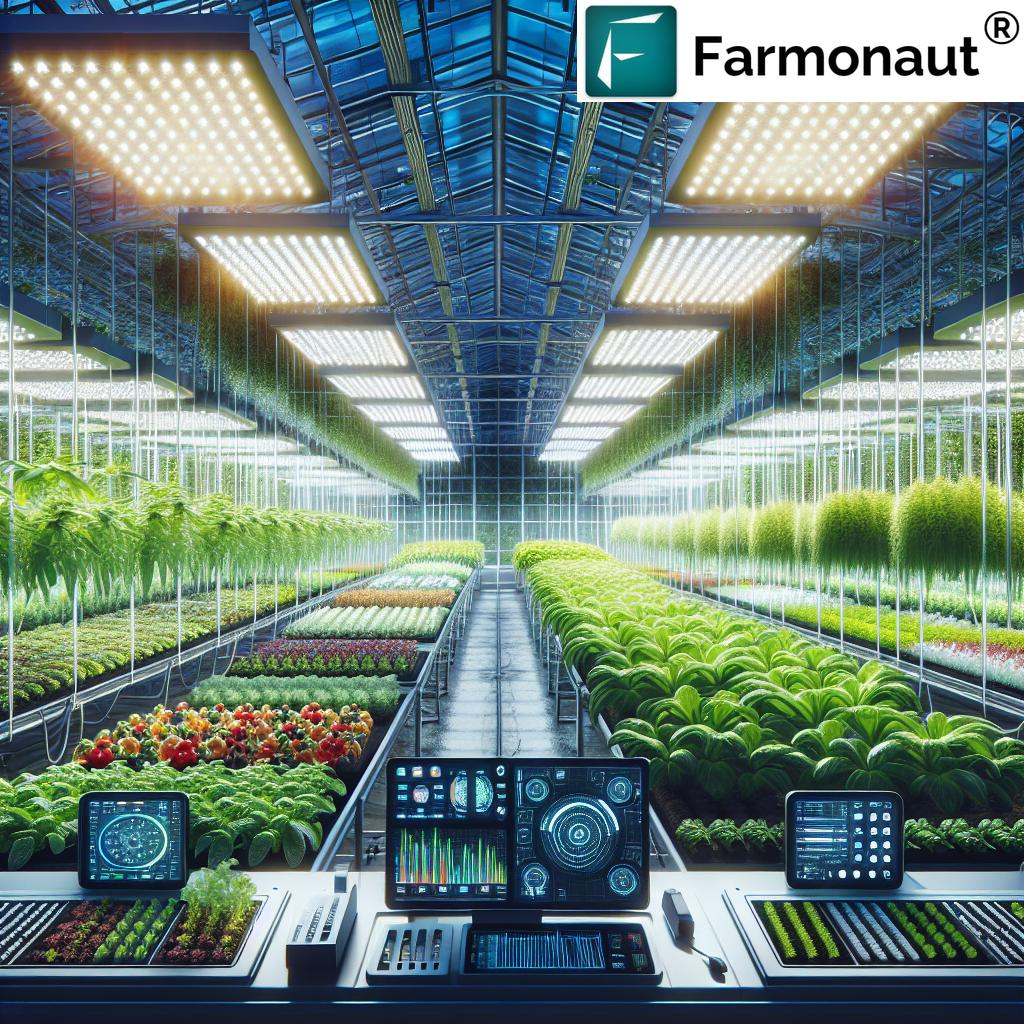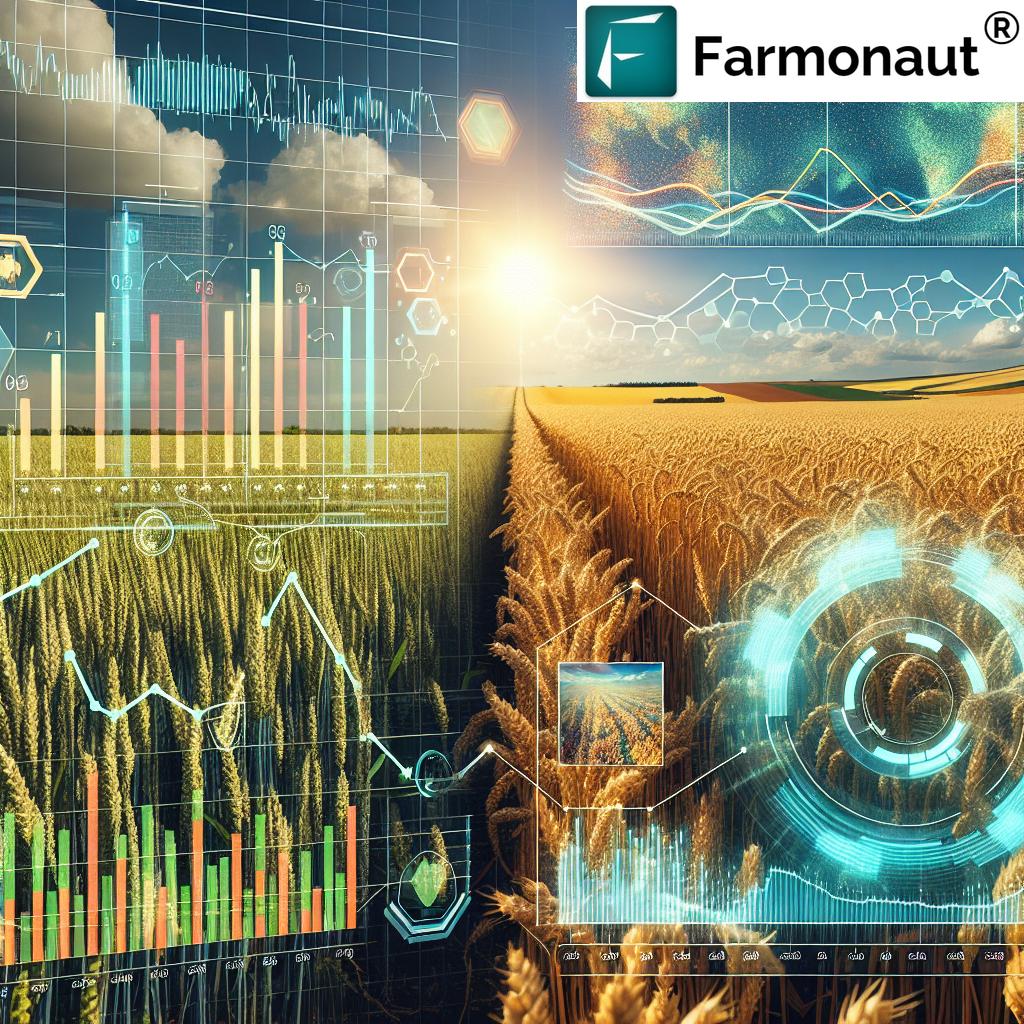Table of Contents
- Introduction: Understanding Low-Carbon Fertilizers
- Impact Trivia
- Traditional Fertilizer Emissions: Why Change is Critical?
- 7 Emission-Cutting Tips With Low Carbon Fertilizers
- Comparison Table: Low-Carbon Fertilizers At a Glance
- Environmental and Economic Benefits of Low-Carbon Fertilizers
- Key Challenges and Considerations
- The Future of Sustainable Fertilizer Solutions
- How Farmonaut Empowers Sustainable Agriculture
- Farmonaut Subscription Options
- Frequently Asked Questions (FAQ)
- Conclusion
Low Carbon Agricultural Fertilizers: 7 Emission-Cutting Tips
“Switching to green ammonia can cut fertilizer-related CO₂ emissions by up to 80%.”
Understanding Low-Carbon Fertilizers
As global awareness about agriculture-related greenhouse gas emissions grows, we must focus on climate-friendly solutions that address the core causes of CO₂ and N₂O release. One of the most promising ways to reduce emissions and build a sustainable food system is by transitioning to low-carbon agricultural fertilizers. These innovative fertilizers are specifically designed to reduce greenhouse gas emissions associated with traditional fertilizer production and use, primarily by replacing fossil fuels with renewable energy sources and integrating cutting-edge technologies.
In this comprehensive blog, we’ll uncover:
- The science and practical strategies behind carbon footprint reduction in agriculture
- The top seven emission-cutting tips every modern farmer should consider
- The benefits and challenges of adopting low-carbon fertilizers
- How tools like Farmonaut’s Carbon Footprinting platform support farm-level emissions tracking for compliance and sustainability
Traditional Fertilizer Emissions: Why Change is Critical?
Traditional fertilizers (especially nitrogen-based fertilizers such as ammonia) are vital for feeding the world’s population. Yet, the production and use of these fertilizers are typically associated with significant CO₂ and N₂O emissions. Traditionally, fertilizer manufacturers rely on natural gas (a fossil fuel) for ammonia synthesis, which contributes significantly to global emissions.
The shift toward low-carbon fertilizers involves:
- Switching to renewable energy in fertilizer manufacturing (hydro, wind, solar power)
- Utilizing climate-friendly fertilizer methods like green ammonia production, enhanced weathering agriculture, and nanotechnology in fertilizers
- Reducing emissions at every stage: from manufacture to field application
“Low-carbon fertilizers can reduce agricultural greenhouse gas emissions by nearly 20% globally.”
7 Emission-Cutting Tips With Low Carbon Fertilizers
Let’s explore practical solutions and methods you can adopt to promote carbon footprint reduction in agriculture. Each of these tips combines new tech, field wisdom, and sustainable fertilizer solutions.
-
1. Switch to Green Ammonia-Based Fertilizers
Green ammonia production transforms fertilizer manufacturing by eliminating fossil fuel dependence. Instead of using natural gas, green ammonia is produced through electrolyzing water with renewable energy (wind, solar, or hydro). Hydrogen from this process is then combined with atmospheric nitrogen to form ammonia–a vital precursor for many chemical fertilizers.
- Impact: This method significantly reduces CO₂ emissions—by as much as 70–90% (Yara International).
- Advantages: Supports a climate-resilient food system and enables large-scale fertilizer decarbonization.
- Implementation: Choose fertilizer suppliers whose products use renewable energy fertilizers and are labeled as “green ammonia derived.”
-
2. Adopt Enhanced Weathering Agriculture Methods
Enhanced weathering involves applying crushed basalt to agricultural soils. The minerals in basalt react with atmospheric CO₂ and water, forming stable carbonates that sequester carbon in solid form while improving soil fertility. This technique not only reduces emissions but also can increase crop yields.
- Environmental co-benefits: Boosts soil health, enhances nutrient cycling, and corrects soil acidity.
- Implementation: Incorporate enhanced weathering via local basalt amendments alongside regular fertilizer routines.
- Research-backed: Enhanced weathering can sequester up to 4 tonnes CO₂e/ha/year, according to arxiv.org.
-
3. Integrate Nanotechnology In Fertilizers For Precision Nutrient Delivery
Nanotechnology in fertilizers leverages nanoparticles (nano fertilizers) to dramatically improve nutrient efficiency and reduce losses. Due to their small size, these particles deliver nutrients directly to plant roots, allowing for maximal absorption and minimizing leaching.
- Reduced nitrous oxide losses: Minimizes N₂O emissions, a potent greenhouse gas.
- Cost savings: Farmers can use less fertilizer for the same (or better) yield results.
- Examples: Nano-urea, nano-phosphate, and micronutrient nano-formulations.
Learn how Farmonaut’s satellite-based advisory tools guide fertilizer management for nanofertilizers by visiting the Large-Scale Farm Management product page.
-
4. Utilize Biofertilizers and Organic Amendments
Biofertilizers are living organisms—microbes such as nitrogen-fixing bacteria, phosphate-solubilizing fungi, or mycorrhizal inoculants—that naturally enhance soil nutrient availability. These climate-friendly fertilizer methods draw upon nature’s processes rather than fossil fuel-based synthesis.
- Decrease reliance on synthetic fertilizers
- Support carbon sequestration and microbial biodiversity
- Low-input, sustainable, and compatible with organic farming systems
Application: Seed treatments, soil applications, or as foliar sprays
Explore Farmonaut’s Traceability System to ensure biofertilizer supply chains are transparent and sustainable from farm to market.
-
5. Employ Enhanced-Efficiency Fertilizers (EEFs)
Enhanced-efficiency fertilizers are formulated to optimize nutrient supply and minimize losses due to volatilization, runoff, or leaching. These include:
- Slow-release nitrogen fertilizers
- Nitrification and urease inhibitors
- Coated or encapsulated fertilizers
By controlling the release of nutrients, EEFs ensure that plants get what they need when they need it, reducing unnecessary applications and associated emissions.
-
6. Optimize Fertilizer Application With Digital Decision Support
Leveraging remote sensing, AI, and satellite data platforms (such as Farmonaut) empowers farmers to apply fertilizers only where and when needed using precise, data-driven recommendations.
- Minimizes over-application/eutrophication
- Supports yield-maximizing and emissions-reducing strategies
- Resource efficiency: Lowers input costs and environmental impact
Try Farmonaut’s Carbon Footprinting & Fleet Management modules to monitor and optimize resource usage.
-
7. Support On-Farm Renewable Energy Projects For Fertilizer Operations
Farmers can invest in on-site renewable energy (solar panels, wind turbines, or biogas digesters) to power irrigation and fertilizer mixing or blending equipment. This decreases the indirect carbon footprint of fertilizer application and farm operations.
- Promotes energy independence and climate resilience
- May unlock subsidies or carbon credits in certain regions
- Integrates well with Farmonaut’s Crop Loan & Insurance Assessment for sustainable farm investments
Comparison Table: Low-Carbon Fertilizers At a Glance
| Fertilizer Type | Estimated Emission Reduction (%) | Main Ingredients / Source | Green Ammonia Use | Environmental Benefits | Typical Application Methods |
|---|---|---|---|---|---|
| Green Ammonia-Based Urea | 70–90% | Urea (from green ammonia + atmospheric nitrogen) | Yes | Major CO₂ emission cuts, supports clean energy | Soil incorporation, fertigation |
| Enhanced Weathering with Basalt | 10–20% | Crushed basalt minerals | No | CO₂ sequestration, soil fertility, pH correction | Soil amendment, broadcast spreading |
| Nanofertilizers | 20–40% | Nano silica, nano urea, micronutrient nano particles | Possible | Reduces nutrient loss, improves absorption, less leaching | Foliar, soil, seed coating |
| Biofertilizers (Microbial) | 10–30% | Rhizobia, Azotobacter, mycorrhiza, PSB | No | Reduces N₂O, builds organic carbon, enhances biodiversity | Seed treatment, soil application, foliar |
| Enhanced-Efficiency N Fertilizers (EEFs) | 10–30% | Coated urea, nitrification/urease inhibitors | Possible | Reduced N losses, lower N₂O emissions, efficient uptake | Banding, fertigation, side-dressing |
| Organic Amendments / Biochar | 5–15% | Biochar, compost, manure | No | Builds soil carbon, retains water, sequesters CO₂ | Soil blending, top dressing |
Environmental and Economic Benefits of Low-Carbon Fertilizers
By embracing low-carbon fertilizers and sustainable fertilizer solutions, our agricultural community opens the door to a host of environmental and economic benefits:
- Substantial Emission Reductions: Low-carbon fertilizers cut emissions at both the production and field application stages, mitigating climate change.
- Enhanced Soil Health: Many climate-friendly fertilizer methods—like applying biochar or basalt—improve soil structure, increase water retention, foster beneficial microbes, and boost resilience against drought and erosion.
- Reduced Input Costs: Efficient nutrient delivery via nanotechnology in fertilizers and EEFs means less wastage and fewer purchases, supporting profitable and sustainable farming.
- Improved Air and Water Quality: Lower N₂O emissions and minimized nutrient leaching cut pollution of air and waterways.
- Stronger Food Security: By promoting sustainable agriculture, we ensure future generations can farm productively with a lower carbon footprint.
Key Challenges and Considerations in Adoption
Although reducing fertilizer emissions offers major advantages, it comes with distinct challenges:
- Production Costs: The move to renewable energy fertilizers and innovative fertilizer technologies often comes with higher upfront costs, making some fertilizers less accessible for smallholder farmers.
- Knowledge Gaps: Farmers in many regions may lack understanding of low-carbon options, leading to slow adoption. Education and demonstration projects are essential.
- Regulatory and Policy Support: Governments and policymakers play a pivotal role in accelerating the adoption of sustainable fertilizer solutions through incentives, standards, and research funding.
- Infrastructure and Accessibility: Some innovative fertilizers (such as those utilizing green ammonia) require new distribution networks and may not be widely available in all agricultural markets.
Tools like Farmonaut’s Satellite & Weather API (see API Documentation) empower the agriculture sector to bridge these gaps and implement sustainable practices at scale—be it field-level monitoring, yield analysis, or resource risk profiling for lenders and governments.
The Future of Sustainable Fertilizer Solutions
Ongoing research and development are rapidly improving the efficiency, affordability, and environmental benefits of low-carbon fertilizers. As the agricultural sector faces mounting climate challenges, these technologies will become integral for achieving global emission reduction targets.
- Green ammonia production is projected to expand worldwide, supported by decreasing costs of renewable electricity and policy support.
- Nanotechnology will enable even greater nutrient targeting and efficiency (Read more on innovations).
- Microbial and biological solutions may transform farm inputs entirely, leveraging the power of soil life (Read more).
- Digital farm management will become the norm, making data-driven climate-friendly fertilizer methods accessible to all.
How Farmonaut Empowers Sustainable Agriculture
Farmonaut is advancing the precision agriculture revolution by integrating advanced, affordable satellite-based farm management with AI and blockchain. Our platform, available via web, Android, iOS, and API, supports:
- Real-time crop health monitoring—track NDVI, soil moisture, and more to guide precision input and irrigation
- AI-driven advisory (Jeevn AI)—personalized, data-backed decisions for sustainable field operations
- Blockchain-based traceability—complete product journey transparency from farm to table, supporting responsible sourcing and reducing fraud
- Fleet/resource management—logistics optimization for large and small farms, cutting operational emissions (Learn more)
- Carbon footprint tracking—monitor field and input emissions, meeting compliance needs and helping you pursue certification or offsets (Explore now)
- Crop loan and insurance assessments—satellite-based verification for risk reduction and smarter financing Details here
With Farmonaut, farmers and agribusinesses of all scales can maximize resource efficiency, reduce fertilizer-related emissions, and strengthen both profitability and environmental stewardship.
Farmonaut Subscription Options
Frequently Asked Questions (FAQ)
What are low-carbon agricultural fertilizers?
Low-carbon agricultural fertilizers are products produced using processes and ingredients that result in substantially lower greenhouse gas emissions, particularly CO₂ and N₂O, than conventional fertilizers. Key strategies include using renewable energy for fertilizer synthesis (such as green ammonia), incorporating natural or microbial biofertilizers, and deploying technologies like nanotechnology for efficient nutrient delivery.
How do low-carbon fertilizers help reduce emissions?
By switching away from fossil fuel-based production, improving nutrient use efficiency, and employing carbon-sequestering practices (like enhanced weathering), low-carbon fertilizers decrease both direct and indirect emissions in agriculture. For instance, green ammonia-based fertilizers can cut CO₂ emissions by up to 80% compared to traditional products.
Are low-carbon fertilizers more expensive than traditional fertilizers?
Currently, some low-carbon fertilizers come at a premium due to additional renewable energy or technology costs. However, falling prices of renewable power and growing incentives are making these options increasingly competitive. Digital advisory and precision farming tools can further help farmers optimize input costs and achieve overall savings.
What digital tools can help farmers reduce fertilizer emissions?
Platforms like Farmonaut offer satellite-based field health monitoring, real-time advisory, and AI-driven recommendations to guide fertilizer usage. These tools ensure resource efficiency, minimize wastage, and track emissions for compliance and carbon footprint claims.
Where can I get more information or assistance on low-carbon farming practices?
Visit Farmonaut’s Carbon Footprinting and Large-Scale Farm Management pages for detailed resources and technology solutions.
Conclusion: Building a Greener Future—Together
Sustainable agriculture is no longer a choice—it’s a necessity for climate, food security, and the prosperity of farmers worldwide. Embracing low-carbon fertilizers, along with smart advisory and digital management platforms like Farmonaut, enables us all to move beyond the limitations of traditional fertilizer production and use.
With science-backed strategies such as green ammonia production, enhanced weathering agriculture, and nanotechnology in fertilizers, we have the tools for reducing fertilizer emissions and building a food system that balances productivity with planetary health.
As emerging technologies converge and adoption accelerates, together we can achieve meaningful carbon footprint reduction in agriculture—ensuring that farmers, communities, and ecosystems thrive for generations to come.






















